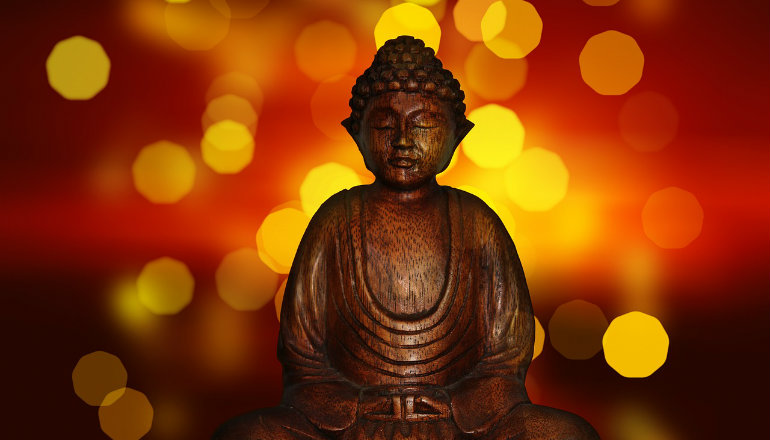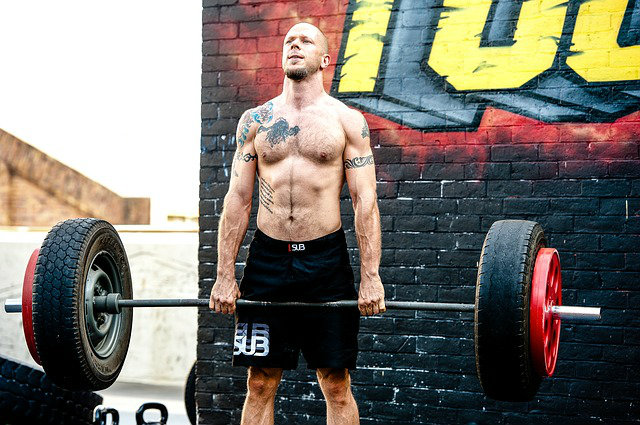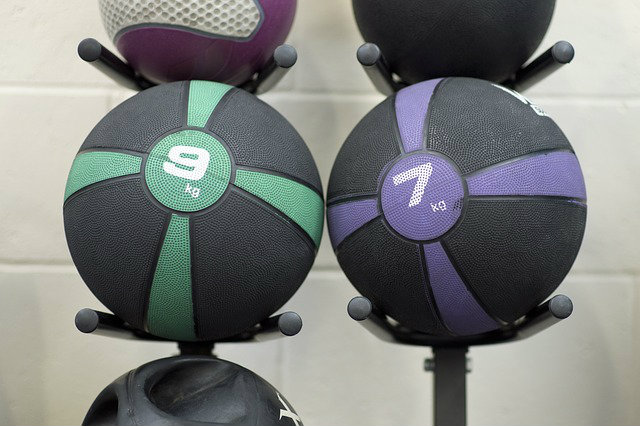 Reading Time: 11 minutes
Reading Time: 11 minutesThe Eightfold Path in Buddhism is a course of behaviors that can help alleviate the cycle of suffering — which we experience as frustration, pain, and unhappiness. The Eightfold Path was the final piece of the puzzle in the Buddha’s discussions about the reality of our discomfort and how to alleviate it.
To apply these eight behaviors to our strength training, we must be able to look at ourselves with love and compassion to see where we are caught up in ego-driven tendencies. This is a chance to grow our strength and our ability to be gentle with ourselves at the same time.
It is in addressing these eight behaviors that we can honestly and justly approach a full acceptance of who we are. Should we choose to neglect these goals and cling to the need to speed up the process of building strength, then we will continue to be frustrated and unhappy.
These eight concepts are to be looked upon as parts creating a whole. The entire Eightfold Path includes learnings that can be applied to every rep, every set, every workout, and every day. The chance presents itself for you, as a lifter, to see the true nature of improvement that goes beyond numbers and scales.
Your daily growth as a full person is expressed in your chosen physical challenge. This is where we can learn to avoid the need for comparison, for unnecessary competition in a gym setting, and to be a version of ourselves that is harmful to our health
This checklist of eight concepts provides us the opportunity to be true to our own needs, listen to our body, and love all parts of ourselves and our training.
1. Right View
We all think we know what we want in a workout or a program. We want to be stronger, but do we have a realistic view of what this is?
If you have decided that benching 500lbs is the optimal sign you have reached your potential, then continue to run toward that goal. But you must cultivate a view that allows for acceptance throughout this pursuit.
Right view allows for change and failure without judgment.
As an exercise for cultivating right view, think of the de-load week scheduled into your strength program. How good are you about abiding by that prescription? Nothing upsets the ego like not letting it make decisions. Recall the times where you have struggled to keep weight off the bar despite the fact you knew it was necessary.
Or how about a time when your travel schedule forced you to miss workouts? Or you were too sleep-deprived to hit the loads as outlined in your program?
These are the optimal times for cultivating right view. This is where you learn that your view must be fluid and ever changing — and when you learn the real process of becoming strong.
2. Right Intention
Nothing is of more significance throughout the process of strength training than the constant assessment of intention. The Buddha’s working definition of karma was simply, “intentional action.” It is our intention that builds on itself, not our behavior. Behavior follows intention. The difficulty lies in our tendency to neglect our intention and focus on our behavior.
I spent years training in strength sports in an environment where my only intention was “to not fail.” I had developed a series of beliefs and behaviors that were focused on avoiding potential ridicule and criticism. I felt that every nuance in my movement could be critiqued, or even worse, isolated as evidence of my inability.
I had completely lost my initial intention of being strong and comfortable with myself. It created a version of me that was avoidant and self-deprecating. This is an inevitable result of not taking the time to cultivate right intention in your training and life.
The positive news is that there is an easy fix. Simply begin setting your intention for every training cycle, every workout, or every rep. Ask, “What do I want to get out of this?” Start practicing an assessment of intent with every movement. Without this simple and conscious effort, you will simply fall into the same negligent habits that can lead to long plateaus, injuries, and maybe even burnout.
Intention is the key ingredient to a lifetime of training. Here is your opportunity to find meaning in every rep for your entire training career. Simply ask yourself what you want from it.
3. Right Speech
Speech is an often-neglected aspect of strength training. Quickly recall something you were truly happy to accomplish as a strength athlete. Now ask yourself if this is something you have discussed with others as a great accomplishment?
If the answer is, “yes,” you may be practicing right speech. If you can communicate in an accepting manner within yourself, then you are practicing a form of right speech. But more importantly, right speech includes the authentic ways you communicate with other people.
Consider the way you talk about your training:
- Are you honest or do you feel people need an embellished version of yourself?
- Do you discuss a constant effort to learn and change or are you critical of other styles of training to make your way seem like the only way?
- Are you supportive of other lifters or do you need people to feel you’re the best at all times?
- Can you express failure?
- Can you discuss failure?
- Do you have the ego strength to consult and train with people much more knowledgeable and stronger than you?
- Do you actually tell people your accomplishments or do you embellish?
All forms of dishonesty and inauthenticity cost us a large amount of energy. Examples of inauthentic speech that can cost us integrity include putting others down, judging other people in the gym, false humility, and any speech that focuses on a sense of constructed and inflated self.
Right speech is not just expressing a good positive attitude and pushing yourself. Right speech involves insight, acceptance, and comfort with yourself. It involves detachment from the fear that our accomplishments pale in comparison to those around us. Right speech is the ability to be an unapologetic and authentic version of self without clinging to the created and fabricated version we think people need to see.
Believe it or not, the best place to start this practice is with meditation. As a therapist, I am often asked by people how to meditate or how I meditate. My answer is, “I sit until I stop lying to myself.”
Meditation helps me filter through my thoughts so I can recognize and present my authentic self. Increasing your ability to be open, honest, and willing to learn will help you build a more complete training model. Therefore, right speech is also dependent on the ability to listen—to our own thoughts and to others.
To simplify, learn how you talk. Learn how you tell stories, and then start cultivating stories that are presenting authenticity. If you can learn how to approach your speech with honesty and acceptance, you will experience growth in training throughout a lifetime.
4. Right Action
The goal of right action is not to simply have a distinct view of what action to take to solve a problem, but to adopt a mindset of “not knowing” to allow for more openness in your process. We must learn how to “not know” everything so we can truly connect to the situation in the moment. For the athlete, taking right action directly involves the mind-body connection.
Many of us have lost contact with our body, and the result is poor technique, reckless training, and pushing limits for no other reason than a perception that we are not doing enough if we are not hurt or at the point of exhaustion. To create this kind of imbalance is a form of self-violence. If we want to accomplish a level of training that is realistic and effective, we cannot fall victim to these harmful expectations.
Right action is where we combine our view, intention, and speech to start becoming a more complete strength athlete. We do this by allowing for simplicity and by listening to our body.
- Learn the necessary action for that specific moment. Give your breath to the body part that is strained.
- Learn how to respond to your body between sets and workouts. Action involves listening just as speech does. In your training, there is no greater action than learning what to do when you are doing nothing.
- Learn how to establish a relationship with yourself that allows you to act in a way that is true to your need.
In applying this simple style of action, you can establish a deeper relationship with yourself. There will no longer be the fear of over complication or over planning because your mind and body will connect in a manner that allows for right action.
5. Right Livelihood
Many of us see our livelihood and our training as separate, but it may be time to see things as flowing together to create a functional whole. If we feel our training keeps us in a strong and comfortable mindset, but our livelihood is tiresome and exhausting, it makes sense to see how our livelihood could benefit from the mindset of our training.
Let us turn back to the discussion of suffering. The suffering we do with a barbell is considered release, and often, the suffering we do with our livelihood is considered a necessary evil. This karma (intentional action) is likely to build to the point that we feel we cannot expect to gain anything from livelihood besides a paycheck.
Take the time to identify what livelihood means to you. It is supposed to be the thing that allows us to feel we are sustaining our life. To establish right livelihood is to learn how to practice all major areas of your life in a giving and fulfilling manner without attachment or avoidance. Harmony is the goal, and no one else gets to define your harmony.
6. Right Effort
Effort is the key component to every single tenet of our workout regimen. In the strength game, it is our ability to learn skills, such as the difference between being hurt and injured, that are the difference between health and disaster.
We cannot see effort as a means to an end. Effort is the end. If we are able to truly accept that our right effort is the goal of training, then it prevents us from making the mistake of attaching to our ego.
Effort is not simply how hard we work. Effort is dependent on our ability to put our blood, sweat, and tears into a kind of strength that benefits not just ourselves, but is mindful of the world around us. Our effort as a strength athlete is what sets us up to feel that we can be helpful, kind, hard-working, and appreciative of the opportunity to grow.
If our effort allows us to feel that we are connected to our entire self, and not just a never-satisfied and aggressive self, then maybe we are putting an effort in that will expand our mind. If our effort expands our mind, then our body will respond.
7. Right Mindfulness
Think about the last time you were about to complete a rep or set and you were actually thinking about the next set. If there is ever any wonder why progress stops, look no further than mindless reps.
To repeat a behavior thousands of time without a full mindful focus is a definitive contributor to stalling in the weight room. If we have squatted thousands of times but we cannot say where we look, when we breath, or where our feet are than we are not practicing mindfulness in any capacity.
The ability to focus on the present moment without judgment is the greatest gift given to humanity. The concept that we have a constantly changing and relevant reality that we can tap into at all times is a gift that goes beyond words. Each moment is our gift. Each rep is our sanctuary.
Right mindfulness ties together the other aspects of the path. To stay in the present moment means we are aware of our intention, effort, speech, action, and view. Lose the present moment and the motion will be numb and unaware.
Try this: Do a light set of any exercise. In that set, notice when you breathe before the movement, notice if you breathe during the movement, and notice where you look. Just a simple trial to see if you can be mindful of the lift you are completing.
Right mindfulness creates an awareness of our body in space. This awareness can be the difference between a personal record and an injury.
8. Right Concentration
In closing our Eightfold Path, we come to concentration. Concentration allows us to set up one particular goal for each particular moment. Concentration is the component that helps us see accomplishment in each moment, and this allows us to see the real nature of progress. When we feel our progress is not occurring at the appropriate pace, it is time to check our concentration.
Right concentration means you can be singular in focus and compassionate in application. Compassion is a key component in allowing us to concentrate without judgment. In the strength sports, being able to be forgiving of yourself is as important as your Inzer Belt. It is the momentary support that can keep it all together.
Allowing for compassion creates the opportunity to pursue goals without judgment. This creates the opportunity for concentration without the distraction of shame. Right concentration puts us in a training mindset that is goal- and compassion-oriented without the loss of focus that leads to egotistical pursuits.
Right concentration knows no judgment. It is simply the opportunity to focus on the moment and the completion of task. It reduces the controlling nature of the ego while allowing for mindful presence.
The Foundation Will Always Be Practice
The Four Noble Truths provide a backdrop for the entire process of our training should we allow it. This is the framework for constant improvement and constant assessment. At any time, we can return to these simple tenets, and in doing so, we can find a new direction and renewed interest in our training.
To accept suffering and our role in worsening that suffering puts us in a position to move toward a healthier acceptance of our reality. Accepting that reality sets the stage for constant improvement.
We can use the practice of these eight tenets as both our goal and our practice. In doing so, we gain the ability to make meaningful corrections in the entirety of our training — and we can then take these lessons into our life.












